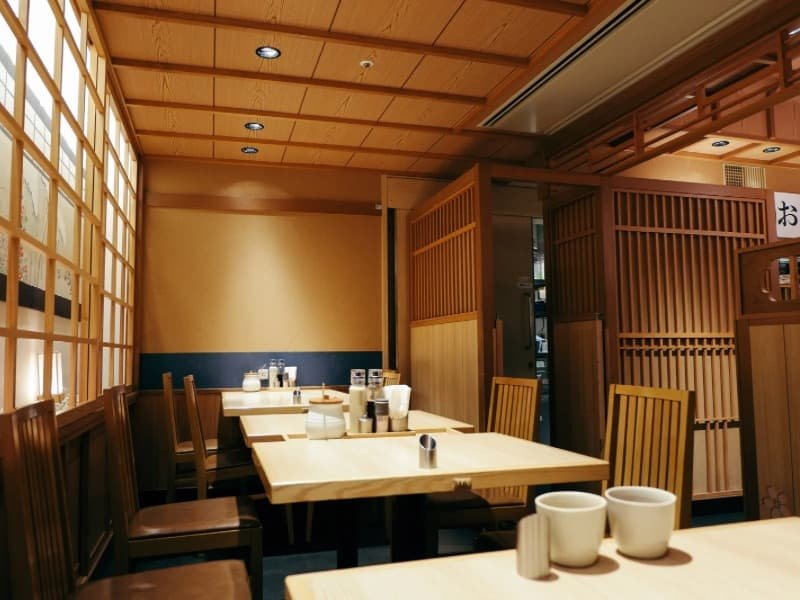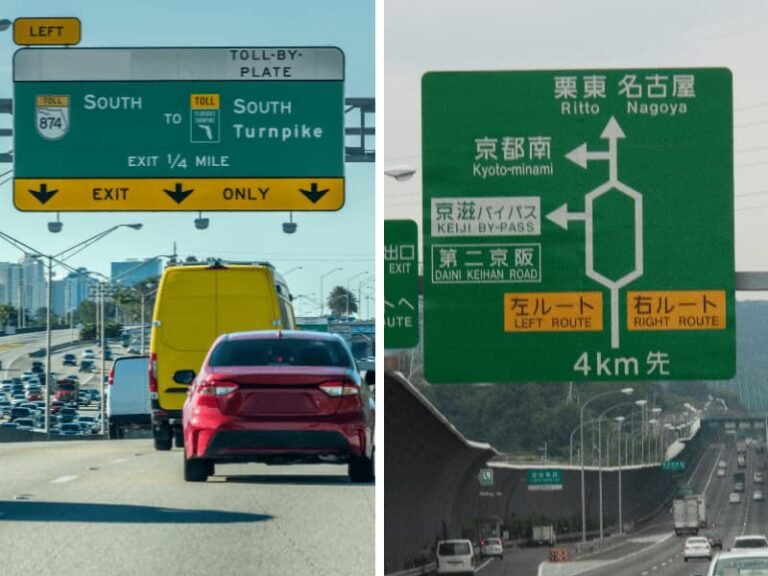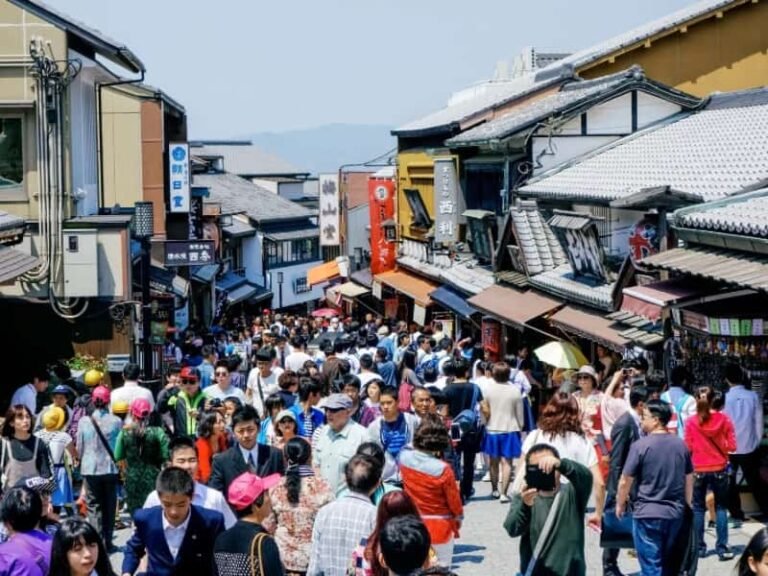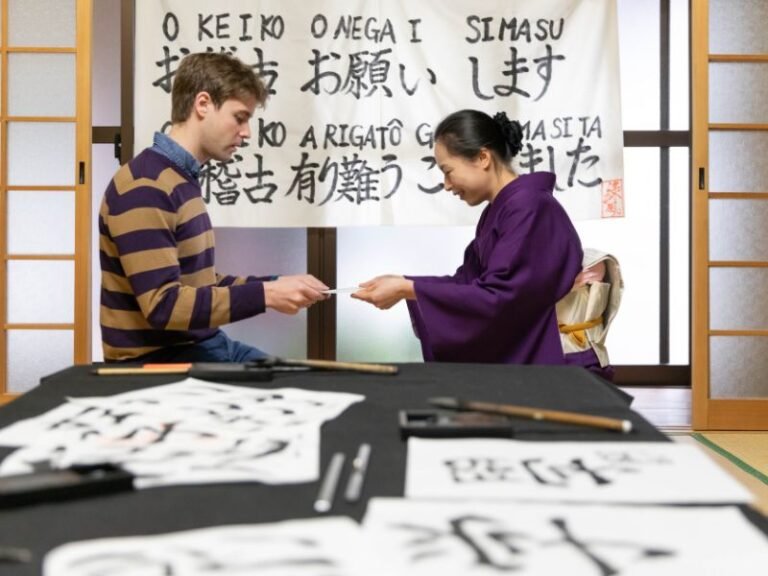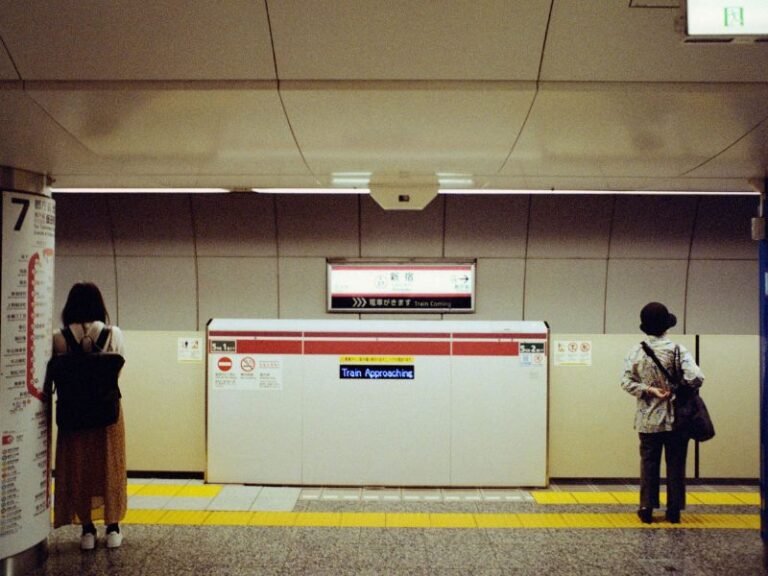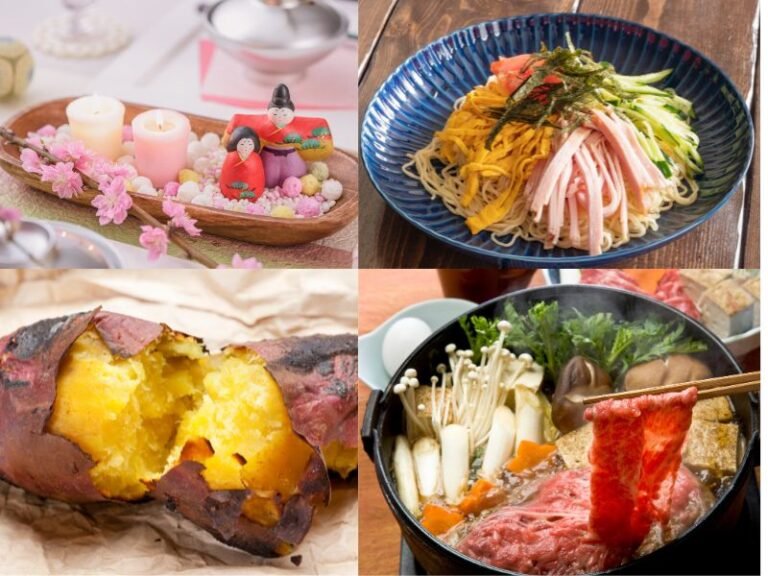How to Eat At A Restaurant In Japan: A Perfect Guide For First-Time Visitors
If you’re planning a trip to Japan, one of the best parts is—without a doubt—the food. But stepping into a Japanese restaurant for the first time can feel a little intimidating:
Where do you sit? How do you order? Are there any special rules?
Don’t worry! This Guide “How to eat at a Restaurant in Japan” will help you navigate Japanese restaurants with confidence—whether you’re trying conveyor belt sushi, cozy ramen shops, or even Japanese-style fast food. Let’s dive in!
Common Types of Restaurants in Japan
Japan offers a wide range of restaurant styles, and each one has its own unique experience. Here’s a quick overview of what you might find:
Gyudon Chains (牛丼チェーン)

These fast, affordable beef bowl restaurants—like Sukiya(すき家), Matsuya(松屋), or Yoshinoya(吉野家)—are perfect for solo travelers or a quick meal.
Order at a ticket machine near the entrance or at the counter, and your food arrives in minutes.
Family Restaurants (ファミレス)

Chains like Gusto(ガスト), Saizeriya(サイゼリヤ), or Denny’s Japan(デニーズ) offer a mix of Japanese and Western food with picture menus, drink bars, and kid-friendly options.
Even if you’ve been to Denny’s in the U.S., the Japanese version is completely different—and worth a try!
Yakiniku (焼肉 – Japanese BBQ)
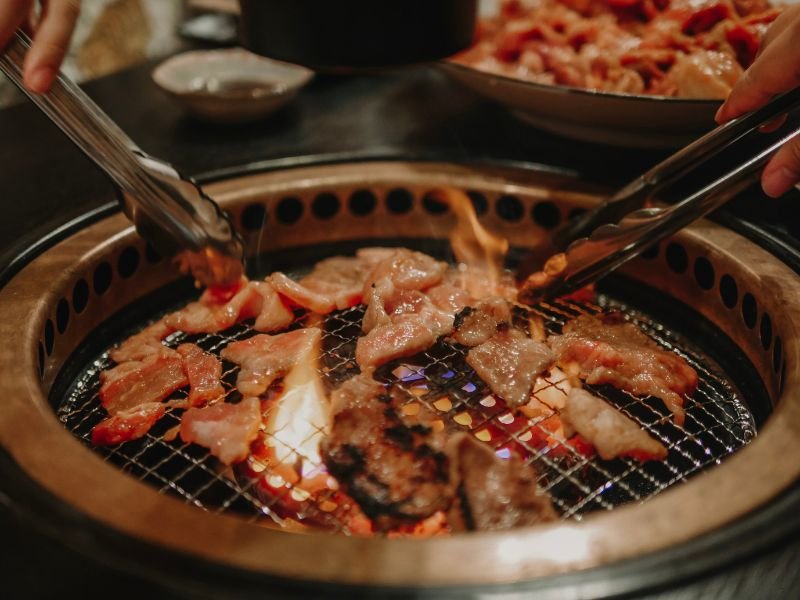
Originally inspired by Korean BBQ, Yakiniku restaurants let you grill your own meat right at the table. It’s a fun, interactive way to dine—especially with friends.
Choose from different cuts of beef, pork, and veggies. Some spots are all-you-can-eat (tabehoudai 食べ放題) and include side dishes like rice, kimchi, or soup.
Ramen Shops (ラーメン屋)
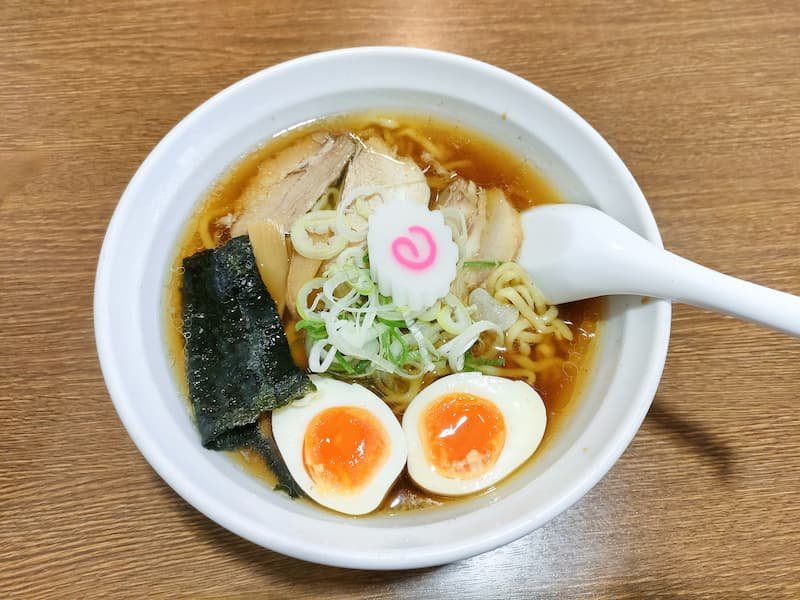
Usually small and cozy, ramen shops often use vending machines for ordering.
Each shop has its own flavor style—try tonkotsu (pork broth), shoyu (soy sauce), miso, or regional variations like Sapporo ramen or Hakata ramen.
Soba & Udon Shops (そば・うどん屋)

These traditional noodle dishes are easy to find and popular for quick meals—especially lunch.
- Soba: Buckwheat noodles served hot or cold.
- Udon: Thick wheat noodles with a chewy texture.
Many stations have soba/udon restaurants right on the platform or near the ticket gates—perfect when you’re catching a train!
Conveyor Belt Sushi (回転寿司)
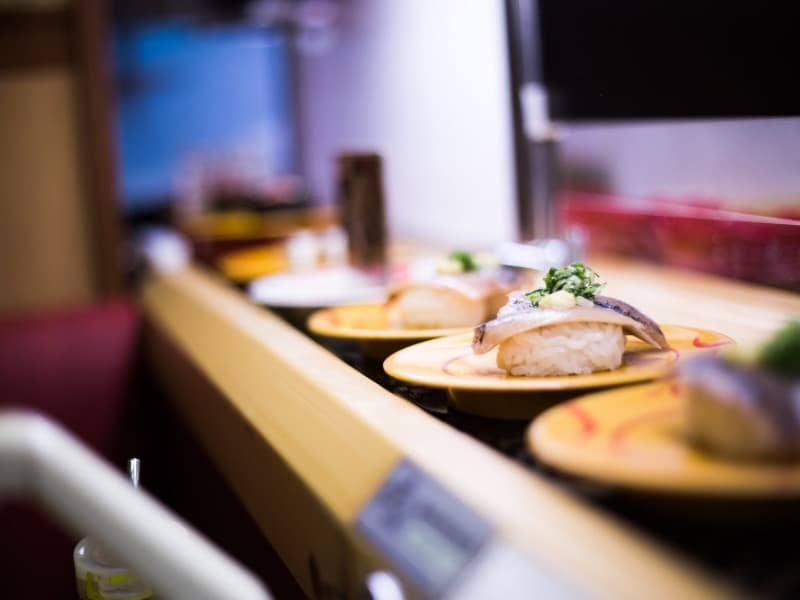
Also called kaiten-zushi, this is a fun and affordable sushi experience.
Pick plates from a rotating belt, or order via touchscreen. Prices are based on plate color or design. Great for casual dining or families.
Izakaya (居酒屋)
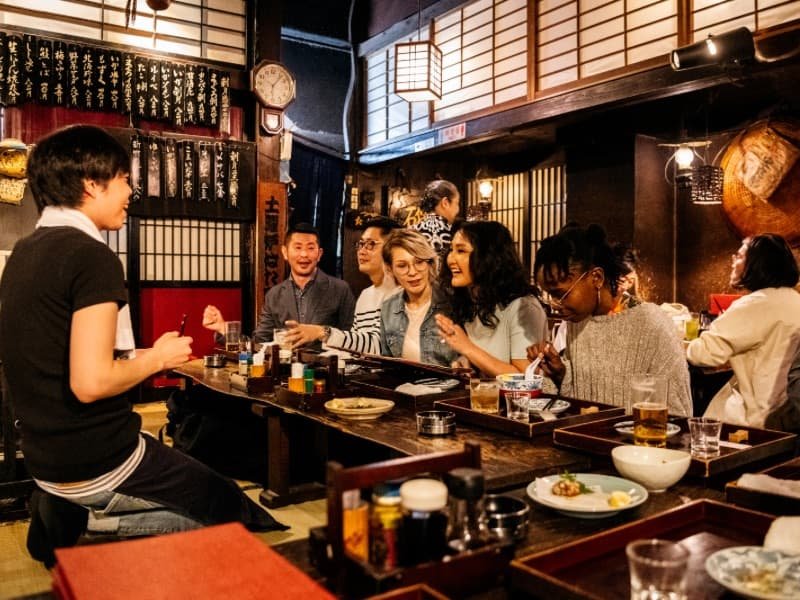
Izakaya is a type of casual Japanese pub that is perfect for sharing small dishes and drinks with friends. Expect a lively atmosphere, late-night hours, and lots of food variety. You may be charged a small table fee (otoshiお通し) that includes an appetizer. It depends on the Izakaya restaurant.
Specialty Restaurants (専門店)
Japan has many restaurants that focus on just one type of dish—and they often do it incredibly well. Here are a few you might come across:
Tempura:
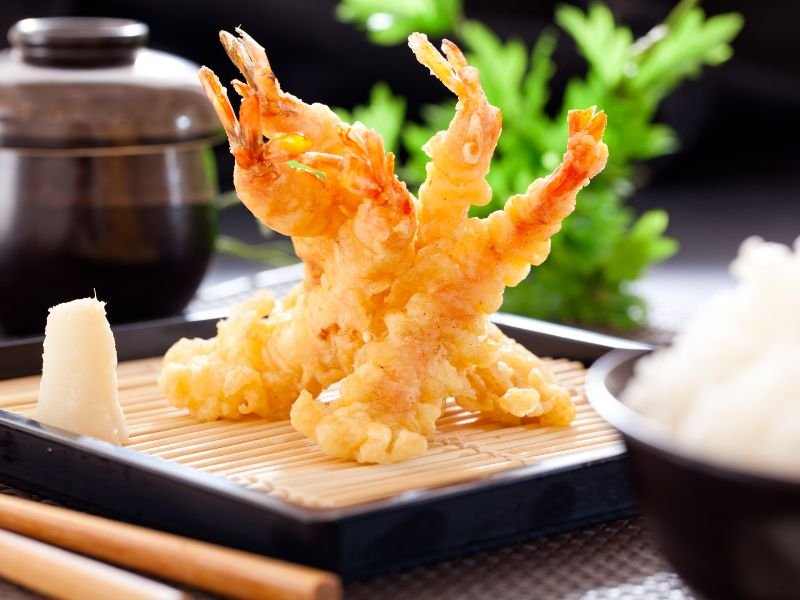
Lightly battered and deep-fried seafood and vegetables. Served with rice or dipping sauce.
Okonomiyaki:

Savory pancake mixed with cabbage and meat/seafood, grilled at your table. Popular in Osaka and Hiroshima.
Shabu-shabu/Sukiyaki:
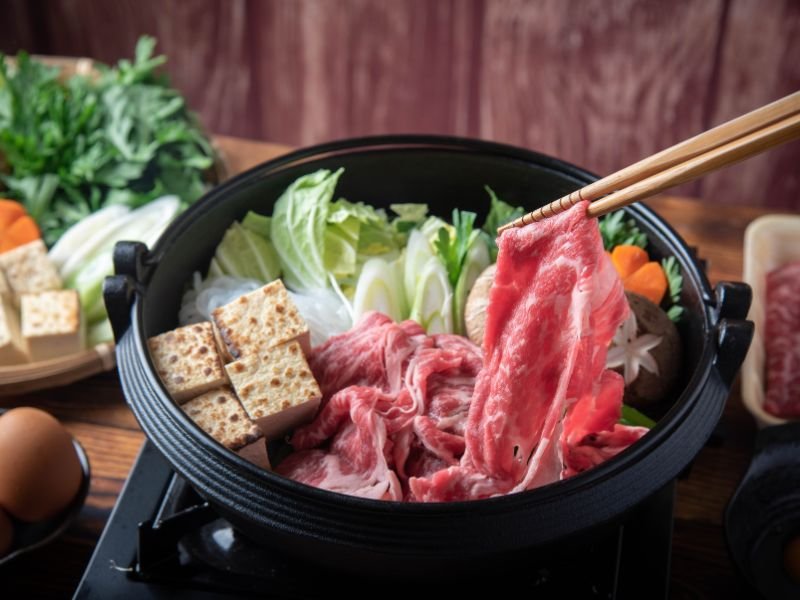
DIY hot pot meals where you cook meat and vegetables in a shared pot. Served with dipping sauces. (The picture above is Sukiyaki.)
Kaiseki(会席料理)
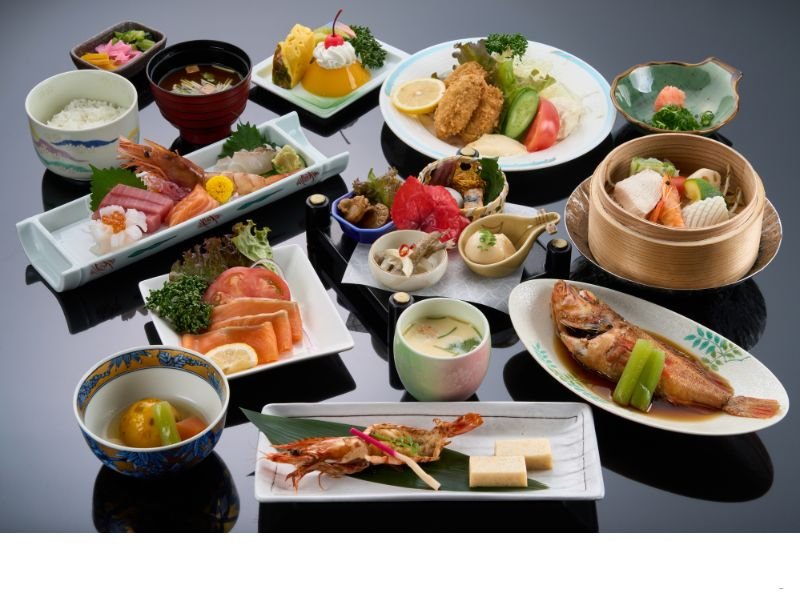
Traditional multi-course fine dining, beautifully presented and often seasonal. Best for special occasions. You need to take time to enjoy Kaiseki ryori. A reservation may be required.
- Yakitori: Grilled chicken skewers (and sometimes veggies or other meats), usually served with drinks at small shops or izakaya.
💡 Solo tip: Eating alone is totally normal in Japan. Counter seating is common, and many restaurants are designed with solo diners in mind.
Western-Style Fast Food in Japan
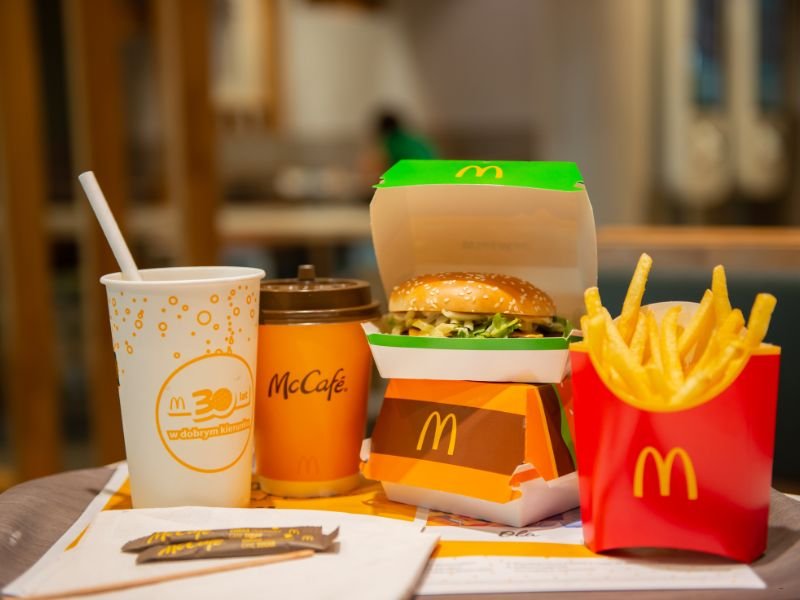
Yes, Japan has McDonald’s, Burger King, KFC, and Domino’s—but they’re often very different from what you’re used to. Expect:
- Smaller portions
- Unique menu items (like teriyaki burgers or corn-mayo pizza)
- Seasonal or limited-time meals
- Spotlessly clean stores and fast, polite service
Even if you’re familiar with the brand, it can be fun to experience the “Japanese version.”
MOS Burger (モスバーガー) – Japanese Original
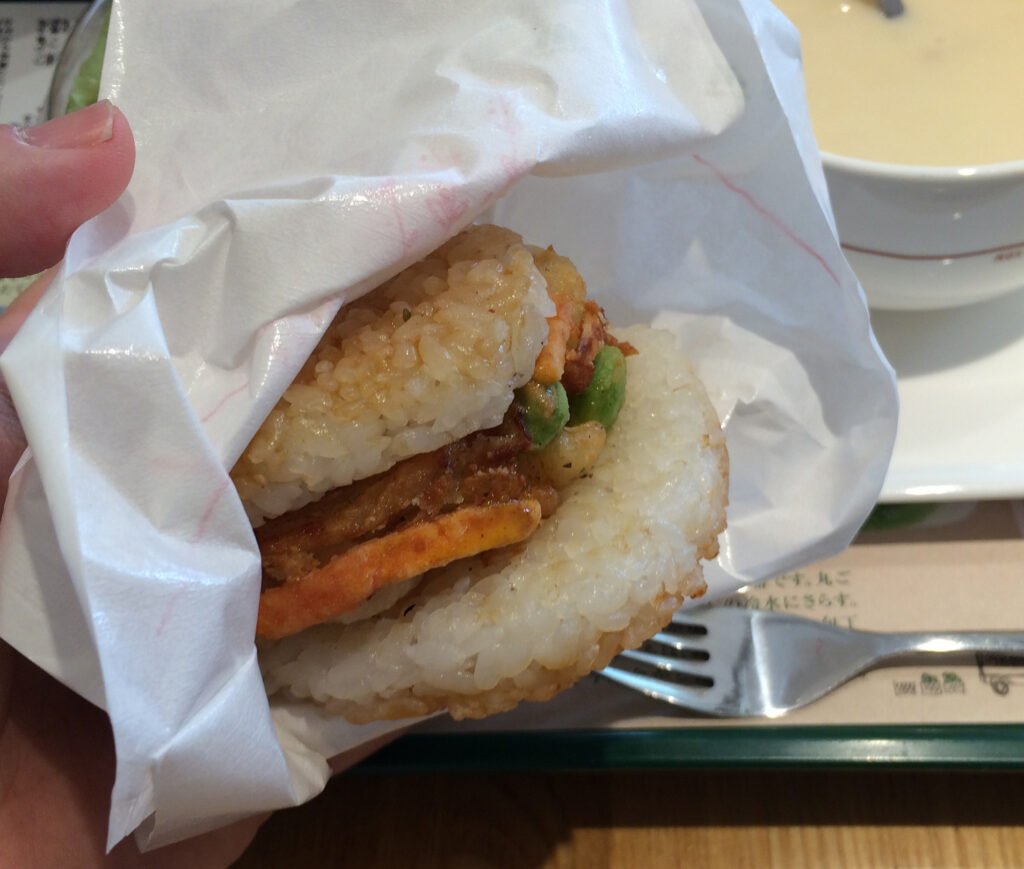
This homegrown Japanese burger chain offers a totally different experience from McDonald’s or Burger King. The signature MOS Burger includes a juicy patty, fresh tomato, and a rich meat sauce. Other creative options include:
- Teriyaki chicken burgers
- Rice burgers (patties made from rice instead of bread)
- Yuzu-flavored sauces and seasonal specialties
MOS Burger is a great way to taste how Japan reimagines the hamburger. My favorite burger in Japan!
Pizza-La (ピザーラ) – Japan’s Favorite Pizza Chain

Pizza-La is a Japanese pizza chain with toppings you won’t typically see in the U.S., like:
- Shrimp and mayonnaise
- Teriyaki chicken and seaweed
- Corn and potato
They often include mini sides like fried chicken or pasta, and their pizzas are usually smaller with thicker, chewier crusts. It’s popular for delivery but some shops also have dine-in spaces or takeout counters.
🍽️ Try It: If you have time, comparing MOS Burger to McDonald’s or Pizza-La to Domino’s can be a fun cultural surprise during your trip!Entering and Seating
Understanding Menus in Japan

In most casual restaurants across Japan—like ramen shops, gyudon chains, or family restaurants—you won’t have much trouble with the menu. Many places have:
- Picture menus
- Plastic food models outside the entrance
- Or even touchscreens with photos and English options
Even if you don’t speak Japanese, pointing to a photo or menu item is usually enough to order comfortably.
What About Traditional Restaurants in Japan?
In contrast, more traditional restaurants—such as sushi bars, kaiseki dining, or local izakaya—may not offer English or visual menus. The menu might be written only in Japanese, with no images or food displays. That’s where understanding a few basic terms can really help!
Common Japanese Menu Words to Know: These words often appear on menus (even in Romanized or Kanji form):
- デザート (Dezāto) – Dessert
- 定食 (Teishoku) – A set meal with a main dish, rice, miso soup, and sides
- コース (Course) – A multi-course set menu, often at upscale restaurants
- 一品料理 (Ippin Ryōri) – Small individual dishes or appetizers
- ご飯もの (Gohanmono) – Rice-based dishes
- 麺類 (Menrui) – Noodle dishes (e.g., soba, udon, ramen)
- 焼き物 (Yakimono) – Grilled items (e.g., grilled fish, skewers)
- 揚げ物 (Agemono) – Fried foods like tempura or karaage
- 刺身 (Sashimi) – Sliced raw fish
- お飲み物 (Onomimono) – Drinks
Seasonal Specials
Keep an eye out for 季節のおすすめ (Kisetsu no Osusume), which means seasonal recommendations. These are often made with the freshest ingredients and change monthly—especially in traditional or regional restaurants.
✨ Tip for Travelers: If you’re unsure about an item, don’t be afraid to ask, “Kore wa nan desu ka?” (これは何ですか?) — “What is this?” Staff will usually try their best to explain, or even bring out an English menu if they have one.
How to Order (Even with Basic Japanese)
After you’re seated, the process of ordering in Japan is quite similar to the U.S.—but with a few unique differences. Here’s a step-by-step guide to help you navigate it confidently:
Entering the Restaurant and Being Seated
1. Enter & Greet

As you walk in, staff will often greet you with “Irasshaimase!いらっしゃいませ” (Welcome!).
If it’s not self-seating, they’ll ask:
- “Nan-mei sama desu ka?” (何名様ですか?) — “How many people?” You can reply with a simple number + “mei desu” (名です).
Example: “Ni-mei desu” (2 people)
Once they confirm your group size, you’ll be led to your table or counter seat.
Tip: Not sure of the number in Japanese? Don’t worry. Check the sheet below!

2. Receiving Menus and the Wet Towel

Once seated, the staff will:
- Give you menus (picture menus are common)
- Provide a wet towel (oshibori) to clean your hands
🧼 Use the towel only for your hands—not your face or neck—and set it aside neatly.
3. Ordering Drinks

In many restaurants (especially izakaya or family restaurants), the first thing the server asks is:
- “O-nomimono wa ikaga desu ka?” (お飲み物はいかがですか?) — “Would you like something to drink?”
You can order right away or say:
- “Mou sukoshi matte kudasai.” (もう少し待ってください) — “Please wait a little.”
🍺 In izakaya, it’s common to say: “Toriaezu biiru!” (とりあえずビール) — “We’ll start with beer for now!”
4.Ordering Food
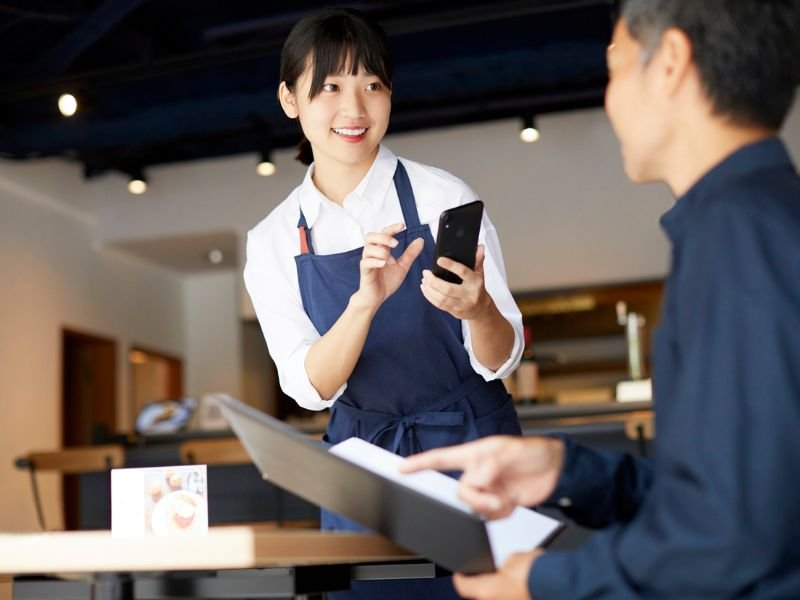
Once you’re ready, you can either:
- Call out: “Sumimasen!” (すみません)” to get the server’s attention
- Or press the call button at your table (many places have them)
You can say:
- “Kore o kudasai.” (これをください) — “I’ll have this, please.” (while pointing)
- “Osusume wa nan desu ka?” (おすすめは何ですか?) — “What do you recommend?”
If ordering multiple items:
- “Ja, kore to kore o kudasai.” — “Then I’ll have this and this.”
📝 Some restaurants may take your full order at once, while others will let you order in stages—especially in izakaya or sushi places where dishes are shared.
5.Waiting and Receiving Dishes
- Your drinks usually arrive first.
- Dishes may come out as they’re ready, not all at once.
- In shared-dish settings like izakaya or yakiniku, expect to order more as you go.
💡 Tip: If you need anything else (like water or a fork), don’t wait for the server to check in—use the call button or say “Sumimasen!”
How to Pay at a Japanese Restaurant
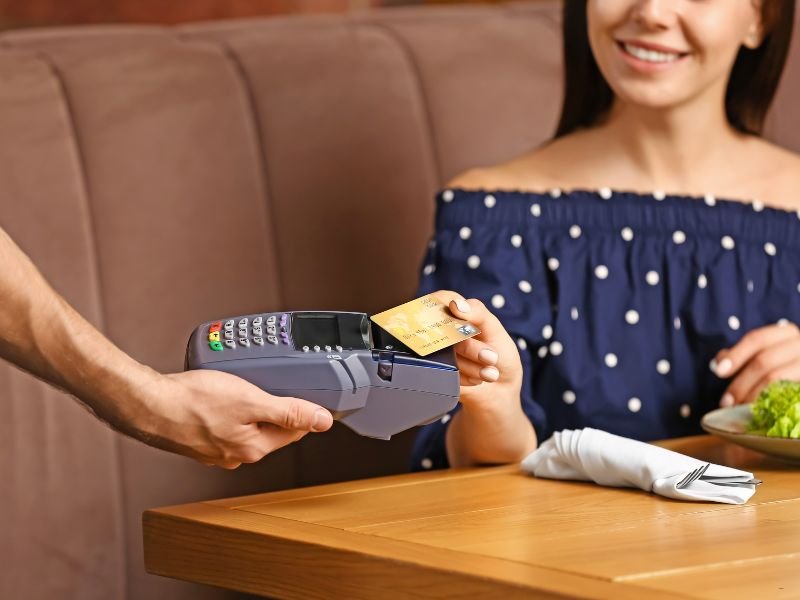
Unlike in many Western countries, in Japan you usually don’t pay at the table—and there’s no tipping. But the exact payment process depends on the type of restaurant. Here’s how it works:
1. Pay at the Register (Most Common)
In most casual restaurants (family restaurants, izakaya, tempura shops, etc.), you’ll:
- Take your bill (oden-sho) to the cash register near the exit
💡 If you’re dining with a group, you’ll usually receive one combined bill. It’s common to calculate and split the cost among yourselves before paying.
✅ No tips needed! In Japan, tipping is not expected—and might even confuse the staff.
2. Pay at a Ticket Machine (Before You Eat)
Some restaurants require you to buy a meal ticket before sitting down. This is common at:
- Ramen shops
- Gyudon chains (like Sukiya, Yoshinoya, Matsuya)
- Casual soba/udon shops (especially in train stations)
- Budget meal counters in shopping areas
Here’s how it works:
- Choose your dish from the buttons on the machine (with prices and often pictures)
- Insert cash (some machines accept IC cards or credit cards)
- Take your printed ticket and hand it to the staff
You’ll receive your food shortly after!
3. At the Table (Less Common)
Some higher-end restaurants, such as kaiseki or multi-course dining, will bring the bill to your table at the end of the meal—similar to the U.S. You can pay using cash or card, depending on the location.
What to Say When Leaving

If you want to express appreciation after your meal, say:
“Gochisousama deshita” (ごちそうさまでした) —
It means “Thank you for the meal” and shows genuine respect to the restaurant staff.
You can say it:
- When leaving your seat
- Or after paying at the register
It’s optional—but if you have the energy, it’s a lovely gesture that locals appreciate!
Final Tips
Eating out in Japan is one of the best ways to experience the culture. Whether you’re slurping ramen or grabbing a teriyaki burger from a Japanese McDonald’s, every meal tells a story.
If you’d like to learn more about table manners and cultural tips, check out my full guide on Japanese etiquette for tourists.
